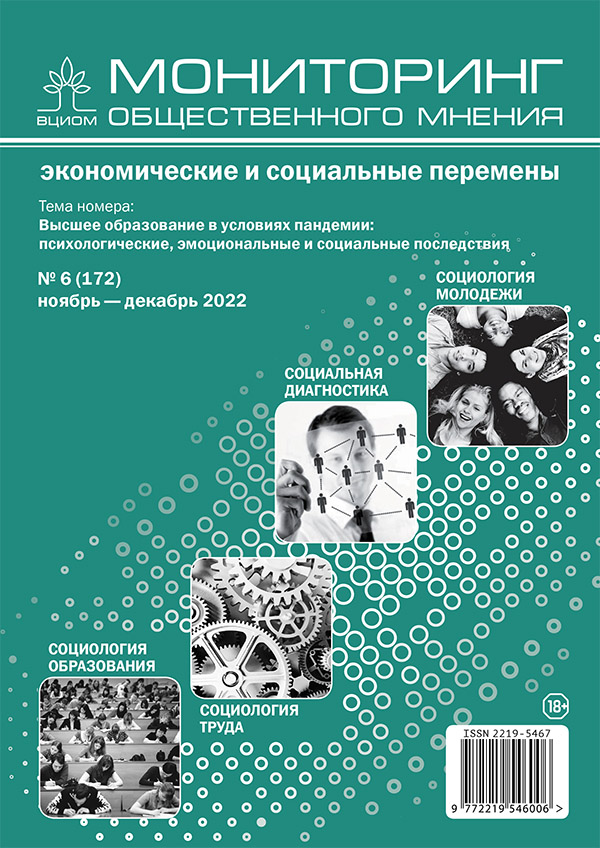Dysfunctions of the Digitalization of Higher Education (Experience of the COVID-19 Pandemic)
DOI:
https://doi.org/10.14515/monitoring.2022.6.2265Keywords:
digitalization of education, student, cognitive style, dysfunctions, motivation, communication, digital technologiesAbstract
The article analyses the key dysfunctions of the digitalization of higher education, changes in grades and students’ attitudes to online learning during the pandemic. The key research method is a questionnaire survey of students of Russian universities. Empirical data are presented by the results of a study of students of Russian universities conducted in June-November 2021 (N = 1 107). Additionally, three focus groups were held with 29 participants (April-May 2022). We concluded that the optimism of students in assessing the benefits of digitalization of education is associated with the possibility of a facilitated search for educational materials, the exchange of experience, and cooperation in the information environment. The study’s results illustrate the transformation of the role of the teacher, who loses the function of a mentor who transfers knowledge. In the new conditions, students request the entertaining nature of learning and the use of digital technologies to keep them interested. In the course of the study, we identified dysfunctions of the digitalization of education: motivation (unwillingness of students to take notes and memorize material in the conditions of the widespread availability of information, transfer of educational activities to the background, “sofa” learning format); control and assessment of knowledge (priority to test algorithms, unethical behavior during control activities and unfair practices of using digital technologies); communication (deterioration of interpersonal communication skills, focus on automation of feedback, “unmanned” learning technologies). Based on the study’s results, we concluded the negative consequences of the digitalization of education during the pandemic: reduced concentration of attention, a distraction from educational goals, a superficial perception of information, lack of critical analysis skills. A chain of dysfunction was revealed, including a decrease in interest in learning, a selective approach to learning, segregation of knowledge, and deformation of the system for monitoring and evaluating knowledge.
Downloads
Published
How to Cite
Issue
Section
License
Copyright (c) 2022 Monitoring of Public Opinion: Economic and Social Changes Journal (Public Opinion Monitoring) ISSN 2219-5467

This work is licensed under a Creative Commons Attribution-NonCommercial-ShareAlike 4.0 International License.






